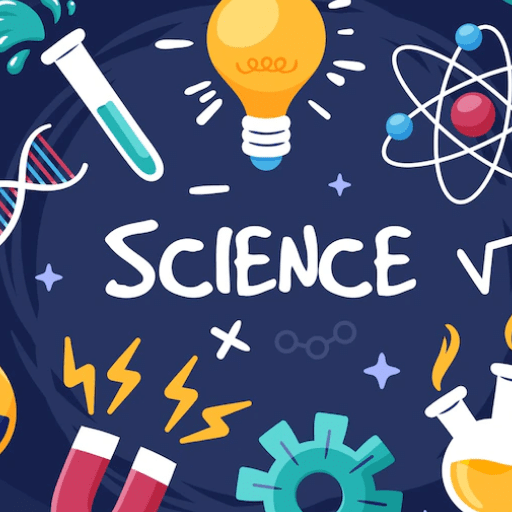Short & Long Question Answers: Living Creatures: Exploring their Characteristics | Science for Class 6 PDF Download
Short Answer Questions:
Q1. What are the essential features of living beings?
Ans: The essential features of living beings include movement, growth, respiration, nutrition, excretion, response to stimuli, reproduction, and death.
Q2. How does a plant grow during its life cycle?
Ans: A plant grows from a seed, undergoes germination, and develops roots and shoots. It then grows leaves, flowers, and fruits, completing its life cycle.
Q3. What is the life cycle of a frog?
Ans: The life cycle of a frog includes stages: egg, embryo, tadpole, froglet, and adult frog. The froglet eventually matures into an adult frog.
Q4. What is the significance of growth in living beings?
Ans: Growth in living beings is important for their development, and it ensures they reach a mature stage for reproduction and survival.
Q5. How do plants respond to sunlight?
Ans: Plants grow towards sunlight, a phenomenon called phototropism, where their shoots bend toward light for better photosynthesis.
Q6. How does seed germination occur?
Ans: Seed germination occurs when a seed absorbs water, the seed coat softens, and the embryo inside grows into a young plant with roots and shoots.
Q7. Why is water essential for seed germination?
Ans: Water softens the seed coat and helps the embryo inside the seed start growing by activating necessary metabolic processes.
 Q8. How do roots and shoots grow in plants?
Q8. How do roots and shoots grow in plants?
Ans: Roots grow downward to anchor the plant and absorb water, while shoots grow upwards toward sunlight for photosynthesis.
Q9. What is reproduction in living beings?
Ans: Reproduction is the biological process by which living beings produce offspring of their kind, ensuring the continuation of their species.
Q10. What is excretion in plants and animals?
Ans: Excretion is the process of eliminating waste products. In animals, it includes processes like urination, while in plants, it includes the release of excess water through leaves.
Long Answer Questions:
Q1. Explain the life cycle of a bean plant.
Ans: The life cycle of a bean plant begins with the germination of the seed. The seed absorbs water, softens the seed coat, and the embryo inside grows into a root and shoot. The plant grows, develops leaves, and eventually produces flowers. After flowering, the plant produces fruit (a pod), which contains seeds. These seeds can then be used to grow new plants, continuing the cycle.
Q2. How does the life cycle of a frog differ from that of a mosquito?
Ans: The life cycle of a frog includes stages such as egg, embryo, tadpole (with tail), froglet, and adult frog. Frogs begin life in water and later move onto land. In contrast, a mosquito undergoes egg, larva, pupa, and adult stages. Mosquitoes live in water during the larval and pupal stages, with the adult mosquito flying after emerging from the pupa.
Q3. Describe the factors necessary for seed germination and their effect on plant growth.
Ans: Seed germination requires three essential conditions: water, air, and sunlight (or sometimes darkness). Water activates the seed’s metabolic processes and softens the seed coat. Air is necessary for respiration, providing oxygen for the embryo. Sunlight or darkness (depending on the plant) influences the growth direction of the seedling. Without these conditions, the seed will not germinate.
Q4. How do plants and animals grow and exhibit movement?
Ans: Both plants and animals grow by increasing in size and developing new structures. Animals move from place to place and perform various physical actions. Plants, though rooted in one place, exhibit movements such as phototropism (movement toward light) and gravitropism (response to gravity). In some cases, plants like insectivorous plants show more noticeable movements, such as trapping insects.
Q5. How does a frog's life cycle help it adapt to its environment?
Ans: A frog's life cycle allows it to adapt to both aquatic and terrestrial environments. Initially, the frog starts as an aquatic larva (tadpole), which uses its tail for swimming. As it matures into a froglet, it begins to spend more time on land. The frog's ability to live in both environments is crucial for its survival, allowing it to exploit different resources throughout its life.
|
66 videos|199 docs|27 tests
|
FAQs on Short & Long Question Answers: Living Creatures: Exploring their Characteristics - Science for Class 6
| 1. What are the main characteristics of living creatures? |  |
| 2. How do living creatures adapt to their environment? |  |
| 3. What is the difference between plants and animals in terms of characteristics? |  |
| 4. Why is classification important in studying living creatures? |  |
| 5. How do living creatures contribute to their ecosystems? |  |



























